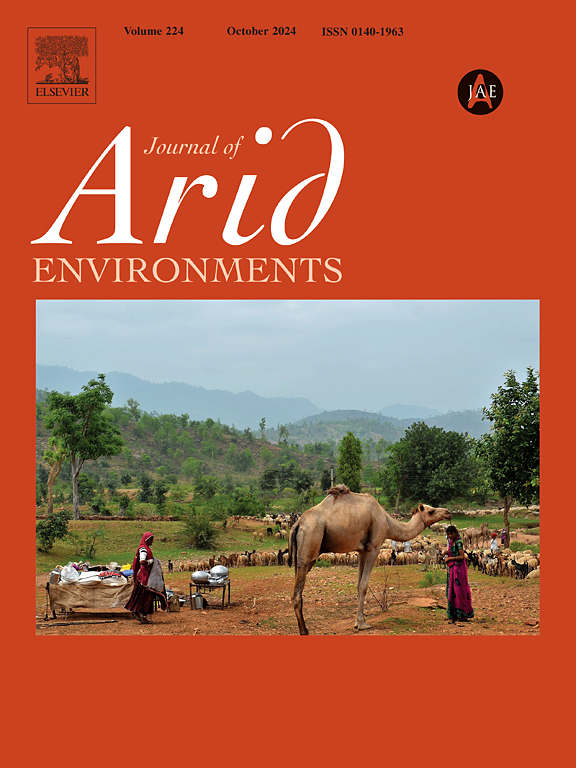Effects of conspecific and congeneric soils and litters on the nodulation and growth of non-native invasive and native Prosopis species in arid deserts
IF 2.6
3区 环境科学与生态学
Q2 ECOLOGY
引用次数: 0
Abstract
Allelochemical production is a plausible mechanism promoting the invasion of Prosopis species in their introduced ranges. This study assessed how allelopathy affects the nodulation and growth of non-native Prosopis species (P. juliflora and P. pallida) and native P. cineraria congeners in the United Arab Emirates (UAE). In two experiments, seeds of the three Prosopis species were grown in conspecific and congeneric soils, and litter was collected from underneath their canopies. Prosopis juliflora and P. pallida seedlings, on average, formed a higher number of nodules than native P. cineraria seedlings. Prosopis juliflora seedlings had the heaviest dry shoots and nodules, whereas P. pallida had the heaviest dry roots. The soil source played an important role in the nodule production of each species, with P. pallida and P. cineraria seedlings producing more nodules when growing in conspecific soils. Nodulation and growth were generally reduced across all species when conspecific litters were added, with P. juliflora being the least affected. The success of non-native invasive Prosopis trees in their introduced ranges could be attributed to their capacity to nodulate profusely and to use the biologically fixed nitrogen to enhance aboveground growth in soils with low nitrogen content.
干旱沙漠中同种和同源土壤及凋落物对外来入侵和本土藜属结瘤和生长的影响
化感化学作用是促进拟豆属植物入侵引种地的可能机制。本研究评估了化感作用如何影响阿拉伯联合酋长国(UAE)非本地拟豆属(P. juliflora和P. pallida)和本地拟豆属(P. cineraria)的结瘤和生长。在两个实验中,将三种拟南芥种子种植在同种和同种土壤中,并收集其冠层下的凋落物。平均而言,黄花拟豆和苍白花拟豆幼苗形成的根瘤数量要高于本地的金针叶拟豆幼苗。黄豆幼苗的干芽和根瘤最重,苍白树幼苗的干根最重。土壤源对两种植物的根瘤产生均有重要影响,在同种土壤条件下,苍白桦和灰孢幼苗的根瘤产生率较高。添加相同凋落物时,所有物种的结瘤和生长都普遍减少,其中黄花杨受影响最小。外来入侵藜树在其引种地的成功可能归因于其丰富的结瘤能力和利用生物固定氮在低氮含量土壤中促进地上部生长的能力。
本文章由计算机程序翻译,如有差异,请以英文原文为准。
求助全文
约1分钟内获得全文
求助全文
来源期刊

Journal of Arid Environments
环境科学-环境科学
CiteScore
5.70
自引率
3.70%
发文量
144
审稿时长
55 days
期刊介绍:
The Journal of Arid Environments is an international journal publishing original scientific and technical research articles on physical, biological and cultural aspects of arid, semi-arid, and desert environments. As a forum of multi-disciplinary and interdisciplinary dialogue it addresses research on all aspects of arid environments and their past, present and future use.
 求助内容:
求助内容: 应助结果提醒方式:
应助结果提醒方式:


